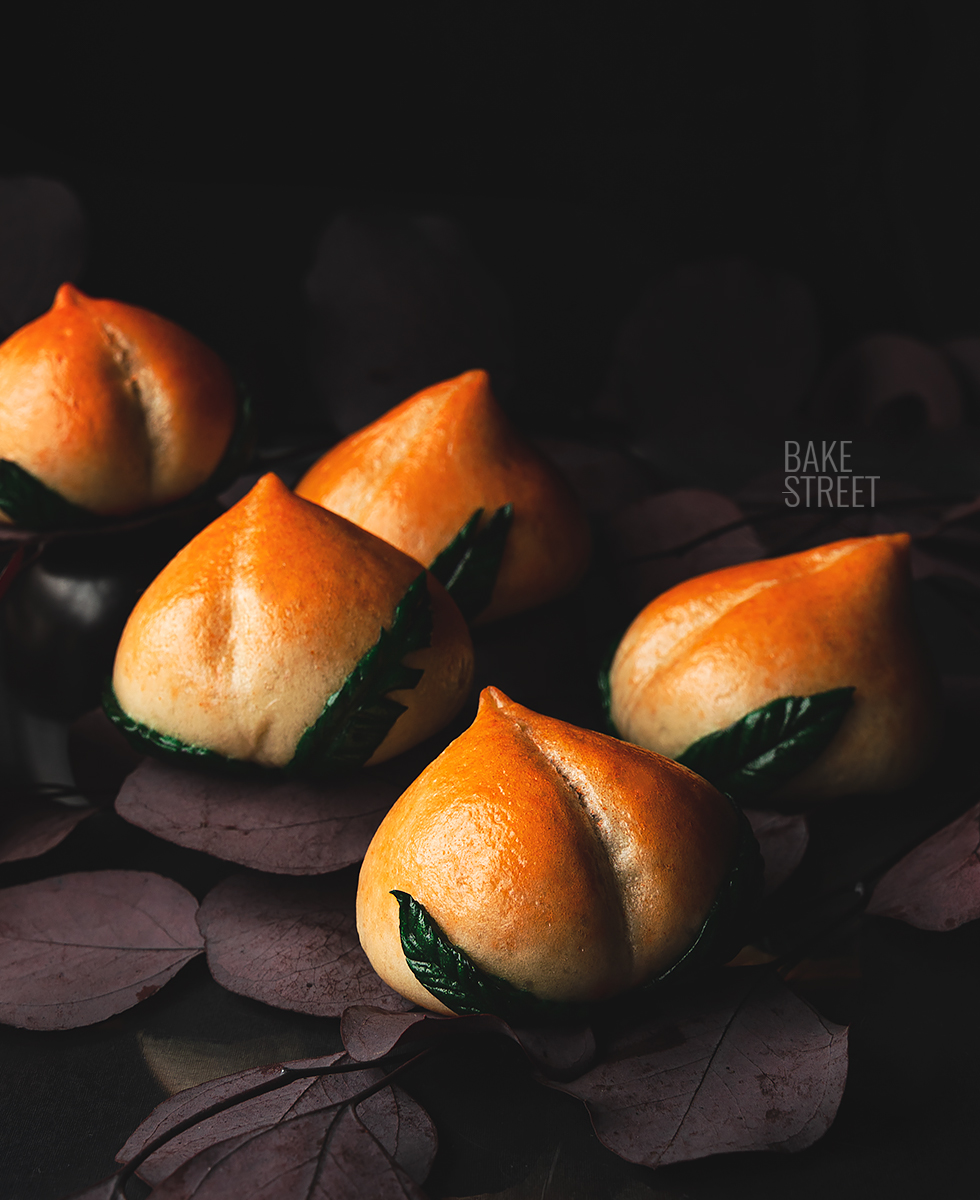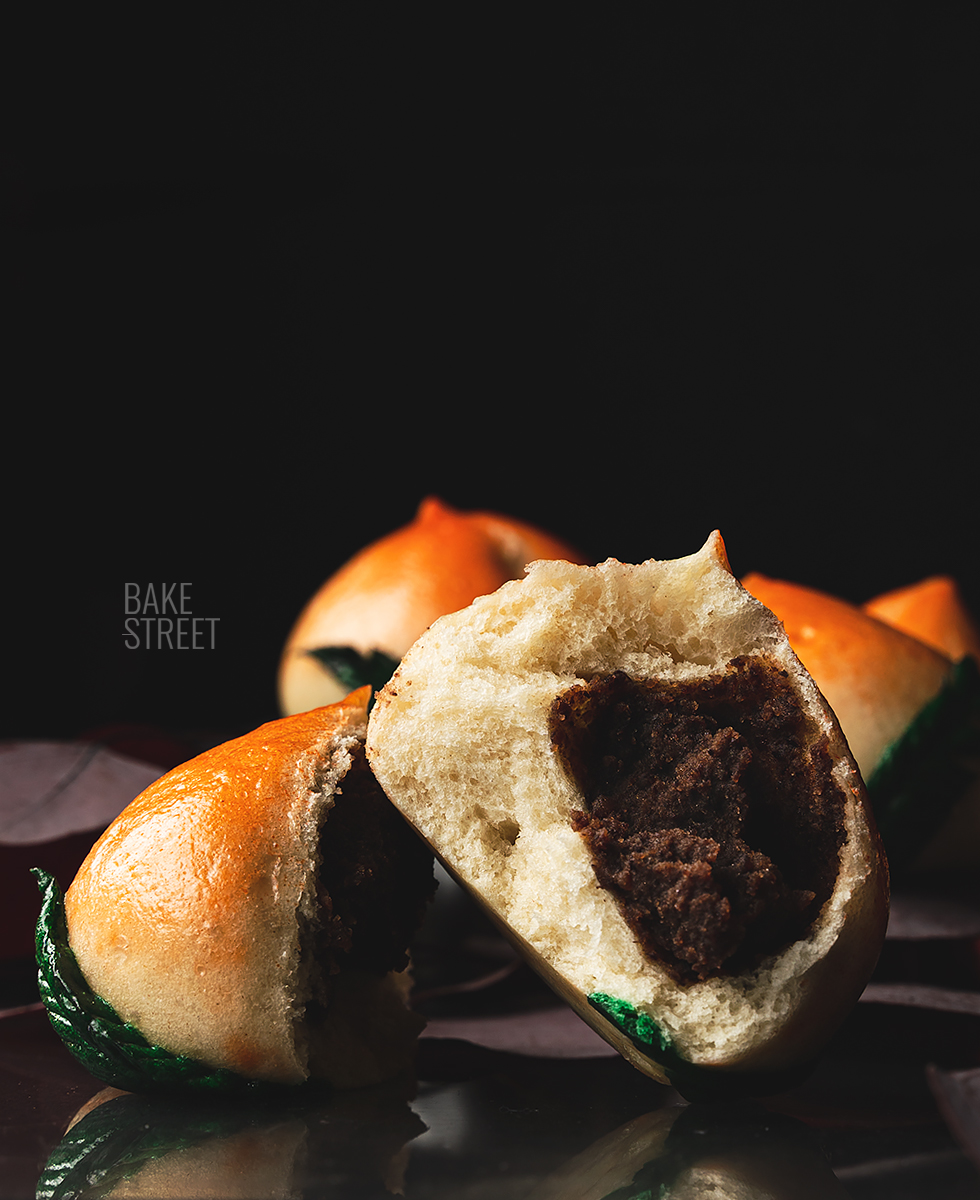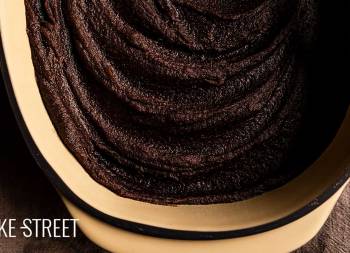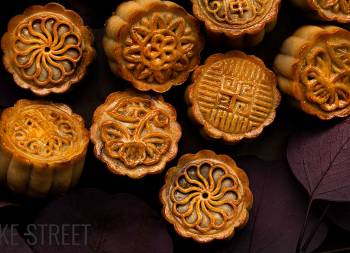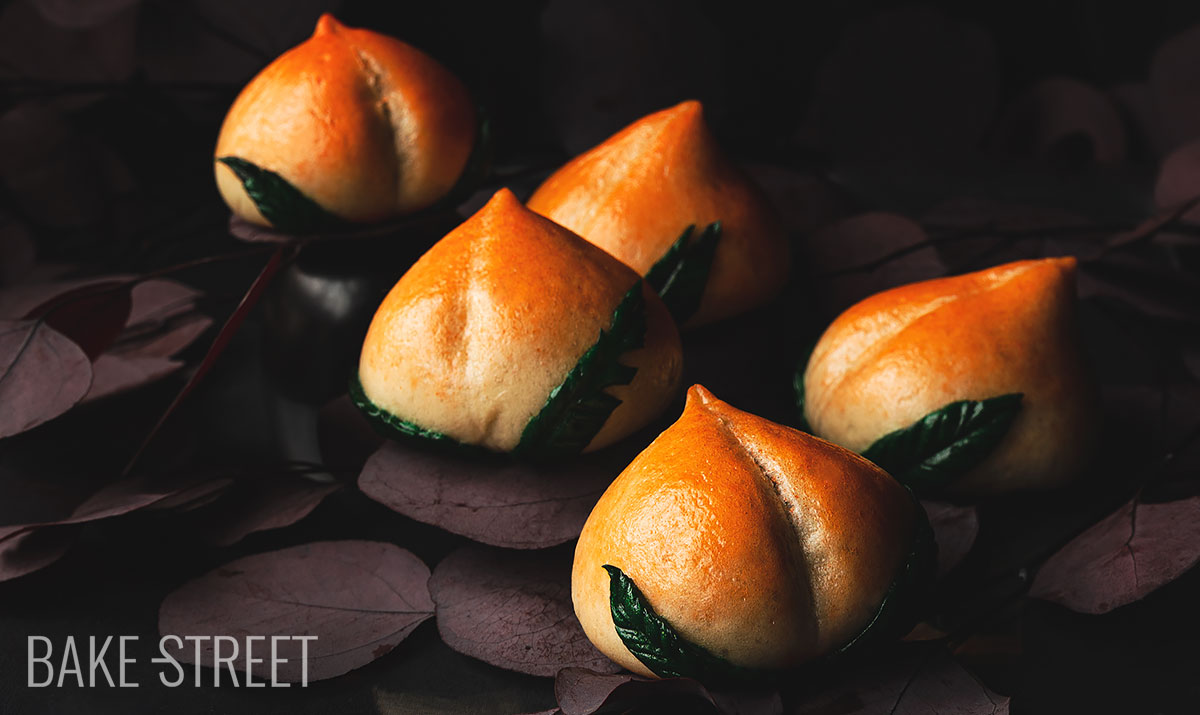
Longevity peach, steamed buns – Shòu táo
I am in love with many things, but in particular and at this very moment with these buns that have fascinated me. Not only for the obvious, their wonderful appearance, but for their flavor and tenderness. Longevity peach, steamed buns – Shòutáo Bao (寿桃包).
I have been looking for new recipes for a few weeks now, from different parts of the world, because I really want to elaborate and try new things. While it is true that what makes up this elaboration are recipes that I know and have tried, I can not say the same about their originality. It is almost impossible to see them and not be tempted to make them! In addition, it is a very simple recipe to carry out (unlike the last video recipe that I have left you), it does not require much kneading, no longer rising time… Nor oven. In 14 minutes they will be ready to eat. We can’t ask for more, no matter how you look at it.
These small, incredibly tender buns, usually made with a sweet filling inside, are very popular in Chinese culture. They look like peaches, a fruit that represents longevity in China.
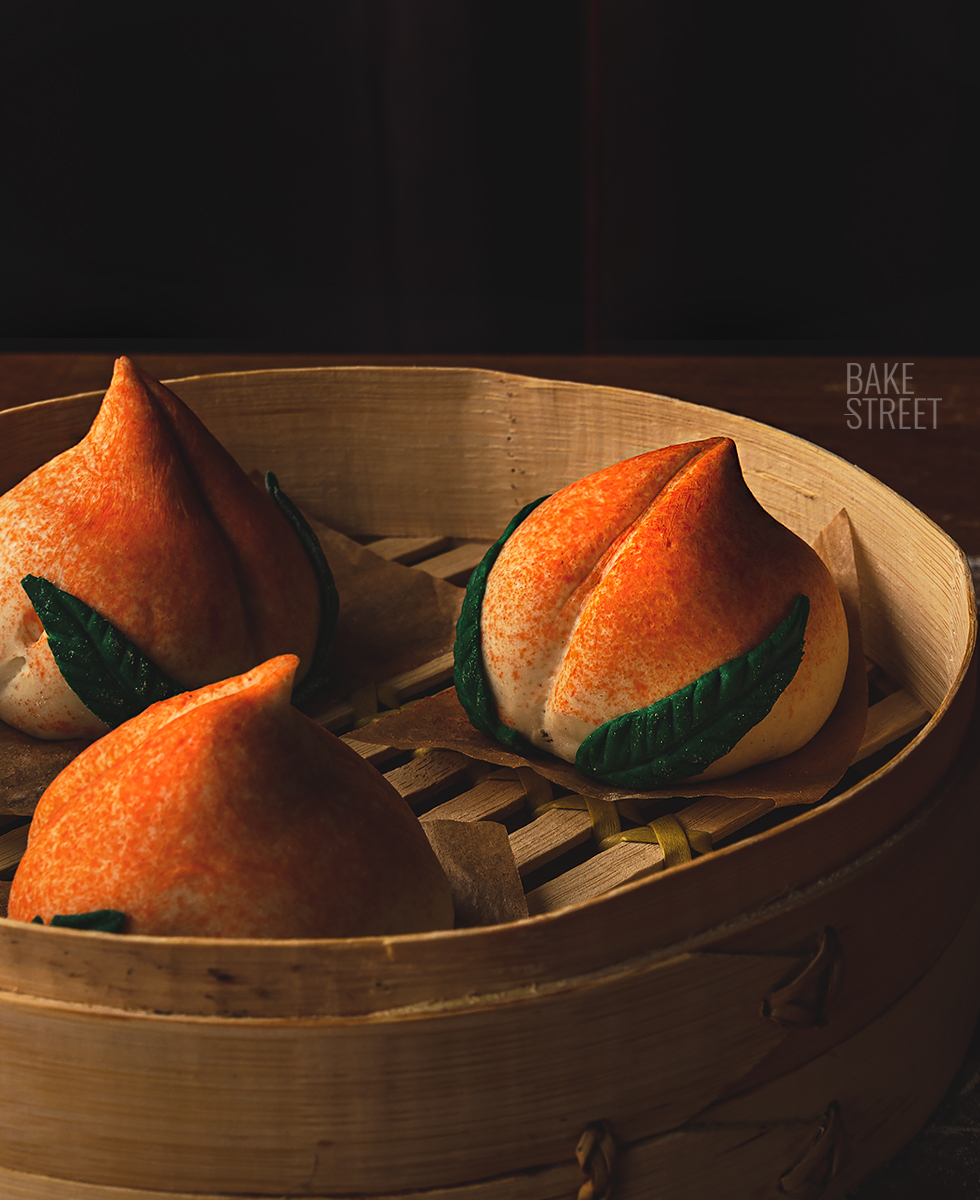
Why are they called longevity peach buns?
Shòu means longevity and táomeans peach.
Why is this fruit the chosen one?
The peach is an icon of long life that comes from the folklore of Shou Xing Gong (“s-ow sing goh-n-guh”), deity of longevity.
Legend has it that Shou Xing Gong is the Longevity Star in the southern constellation of Argo. The earliest known record of Shòu Xīng as a deity is the Shǐ jí 史籍 (historical records, 149-90 BC). This star is known as Canopus, the largest of the stars in the constellation Carina, and the second brightest in the sky. In Chinese mythology, the star is known as the Old Man of the South Pole(Nánjí lǎorén, 南极老人) and is seen in the south from the Autumnal Equinox until early spring.
When observed it usually has a reddish color, a symbol of happiness and longevity in China, Canopus is also known in China and its neighboring countries of Korea, Japan and Vietnam as the Star of Old Age.
Shou Xingis easily recognizable by his oversized forehead, which represents wisdom, and his extra long beard, which is meant to represent having lived a long life.
Shou Xing Gong is always depicted holding a long staff and a peach, both symbols of longevity, which are said to come from Xi Wangmu’s magical peach garden located in the sky. Xi Wangmu is also called Yinand is the personification of femininity and Chi energy of the same name.
The peach trees in her garden only bloom every 3,000 years. The famous figure of the god of longevity carries the peach of immortality as an offering, showing that long life can be granted to those who pay their respects to Shou Xing Gong.
It is known that Shou Xing Gong had a very long life despite being a sickly child during his childhood. The peach he wears is a symbol of immortality. Therefore, in art and sculpture, Shou Xing Gong is always seen carrying one.
From this arose the tradition, since ancient times, that immortal beings were given peaches as they promised to bestow longevity. They were called peaches of immortality and, to this day, the peach has been used as a symbol of longevity.
It is common to see fresh peaches or steamed peach longevity buns as gifts on birthdays in Chinese culture.
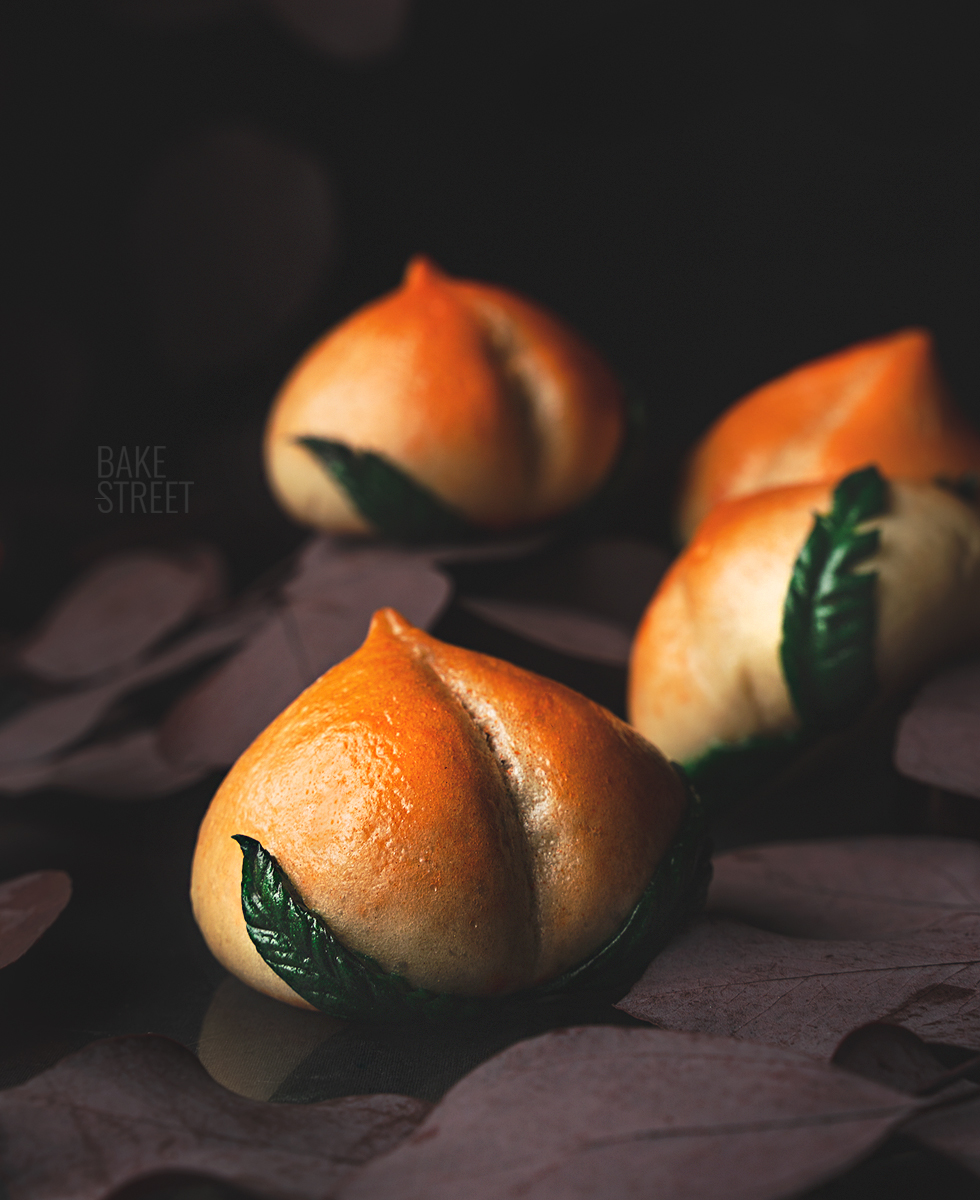
Origin of Shòutáo Bao – Peach of longevity.
This sweet treat is a Cantonese elaboration, originally from the province of Guang Dong, in the southeast of China. It is customary in southeast Chinese culture to give symbolic gifts to friends, relatives or neighbors on their birthdays.
Other types of gifts include gold in the shape of a peach, or yee mein (noodles) eaten together.
These gifts have a symbolism and that is that you want the birthday person to live forever.
This peach-shaped bun is originally filled with lotus paste, although it can also be filled with anko, a sweet red bean paste. Depending on the baker, it can have more or less detail in the decoration. It is usually colored with red dye, to give a pinkish hue, and decorated with leaves.
The Cantonese have the custom of giving them as gifts on birthdays to express their wish to celebrate more birthdays in the future.
Recipe Longevity peach, steamed buns - Shòu táo
Ingredients for 7 pieces
DOUGH:
- 250 g all purpose flour (9% de protein)
- 65 g boiling water
- 90 g water at room temperature
- 4 g fresh yeast or 1,3 g dry yeast
- 1,5 g salt
FILLING:
- 210 g anko (recipe in this link)
FOR BRUSHING:
- peach or red coloring (in my case it is Sugarflair "Peach" coloring paste)
- water to dissolve
- new toothbrush + strainer or fine-mesh metallic sieve
- green coloring for the leaves (in my case I used Sugarflair "Holy Green" paste coloring)
MATERIAL WE WILL NEED:
- Scrapers
- Large bowl
- Fast cooker + steamer or... Metal steamer for pot or Bamboo steamer
- baking paper
Instructions
Prepare Shòu táo dough.
- In a large bowl add the flour and boiling water. Mix with the help of chopsticks to avoid burning.
- Add half of the water at room temperature, mix again.
- Incorporate crumbled fresh yeast, mix.
- Pour the rest of the water and mix again.
- Finally, add the salt and mix.
- Begin to work the dough with your hands, once it is more or less amalgamated, move to a clean work surface and knead. We should not develop the gluten completely or obtain a smooth and homogeneous dough.
- Once the dough is semi-developed, knead, cover with a bowl and let it rest for 10-15 minutes.
While the dough is resting, we prepare the filling.
- You can make homemade anko following this recipe I left you some time ago. I advise you to make it the day before and let it rest in the refrigerator.
- Prepare 7 balls of 30 g each. Roll them gently, place on a plate and cover with plastic wrap.
Divide the dough into portions.
- Divide the dough into 7 portions of 50 g each. We will have a surplus of 45-50 g that we will reserve to make the leaves.
- Roll the piece that will be used to make the leaves and wrap it in film.
- Round the rest of the pieces without exerting pressure or tension, we must form them gently.
- Once we have all shaped, cover with film and let stand while we dye the dough for the leaves.
Color the dough for the leaves.
- If you do not want to dye your hands, use gloves.
- Place a small amount of green coloring paste in the dough that we had reserved for the leaves.
- Start mixing and kneading to integrate the dye into the dough. Once it is almost integrated, you can finish mixing/kneading without gloves, it will no longer stain your hands.
- Wrap again in plastic wrap and set aside.
Shape peaches.
- Lightly flour a work surface.
- Stretch one of the pieces with the help of a rolling pin, we should not give a very large diameter. Just enough to cover the piece of anko.
- Slightly refine the edges by passing the rolling pin.
- Place the piece of anko in the central part of the dough and wrap it with the dough. Seal very well and place upside down.
- Refine the top by sliding our thumb and forefinger to create a small peak.
- Finally, with the help of a scraper or other similar utensil, mark vertically in the central part of the piece.
- Repeat the same process with the rest of the pieces. I advise you to cover the peaches with film as you form them to prevent the surface from crusting.
Colour the peaches.
- Dissolve the coloring paste in some water.
- Place a piece on baking paper, to avoid staining the table or work surface. With the help of a new toothbrush and a fine mesh sieve or strainer, paint the surface.
- Dip the brush in the mixture and slide it over the sieve, which will be placed over the peach. In this way we achieve a sprayed effect, in the same way as if we use an airbrush.
- Repeat the same process with the rest of the pieces.
Cut the leaves and place on the buns.
- Stretch the colored dough on a floured surface.
- Cut the leaves with the help of a knife and texturize. We need 14 leaves in total, two for each piece.

- Put the leaves on the peach, moisten the leaves a little to help them adhere well to the bun.
- Once placed, we can texturize again if we wish. This way the relief will be much more marked.
- Once all the peaches are shaped, place them in steamer trays and let them rest for about 15-30 minutes, depending on the outside temperature and the time we have taken to carry out the whole process. The pieces should grow approximately 50% from the moment we have shaped them. The pieces should not double in size.

Cook with steam.
- Prepare the steamer to cook the longevity peaches. In my case I have used my pressure cooker that allows me to steam. I have also used the bamboo steamer trays to let them rest.
- Once the water is boiling, reduce to medium heat and introduce the first tray with the buns.
- Place the lid, it is not necessary to close it, just overlap it, and cook for 12 minutes.
- After this time, remove the lid slowly to allow the steam to escape, turn off the heat and leave the lid overlapped and with a grid so that steam can continue to escape. Let stand for 2 more minutes.
- Remove and place on a wire rack. In this step, if we wish, we can spray again with a little dissolved coloring (and with the help of the brush + sieve) to enhance the final color.
- Cook the rest of the pieces.
- Serve, they can be consumed warm or cold.

Notes
- This type of steamed bread is made with a flour called "pau". Flour bao bread can also be used. In my case I could not find it and online it was slow to arrive, so I used an all-purpose flour with low protein, 9%.
- Mostly they are filled with anko, sweet bean paste, but they can also be filled with lotus paste (the traditional ones) and I have even seen some with pastry cream.
- It is a dough that should not be subjected to long fermentation processes. The reason is that when steaming them, the result would not be so aesthetic, and could even collapse and have a wrinkled appearance.
- When shaping the peaches, we must try to touch the dough just enough. The more we touch, the more chances we will have to obtain a rough or wrinkled finish.
- To paint the peaches we will use a new toothbrush with stiff bristles and a fine sieve. The finer it is, the finer the final spray will be.
- In my case I have used colorant in paste, but you can use colorant in gel or powder. In these cases, you will have to adjust the quantity of water.
- If you do not want to use colorants, you can omit them.
- They keep in perfect condition for 24 hours in an airtight container, although the ideal is to consume it at the same moment that we make them.
- They can be frozen, individually wrapped in film, for 3 months. To consume them we will only have to leave them at room temperature.
- We can give a slight heat shock, if several hours have passed, before eating. Or if we have defrosted them and we want them to be very fluffy. We can do it in the steamer, at low heat, for 3-4 minutes or in the microwave. In this last case we will cover the bread roll with kitchen paper dampened and drained with water, and we heat it for 1 minute approximately.

I don't know if at this point of the post you are as captivated by this Longevity Peach, steamed buns - Shòu táo as I am. There are elaborations that are not only their outer appearance, but also the inside and its history.
You already know that I love to know the origin of each and every thing I share with you, although it is not always possible. I find the story behind this little sweet steamed bread beautiful and very heartwarming..
I have always loved oriental culture, since I was a child, I feel very identified with many of their customs and traditions. And, I must say, the more I know about them, the closer I feel the bond.
I wish you a wonderful weekend and, I hope enjoy these little wonders.
Lots of love,
Eva
Sources: What to Cook today, Qigong in China, Cbc


